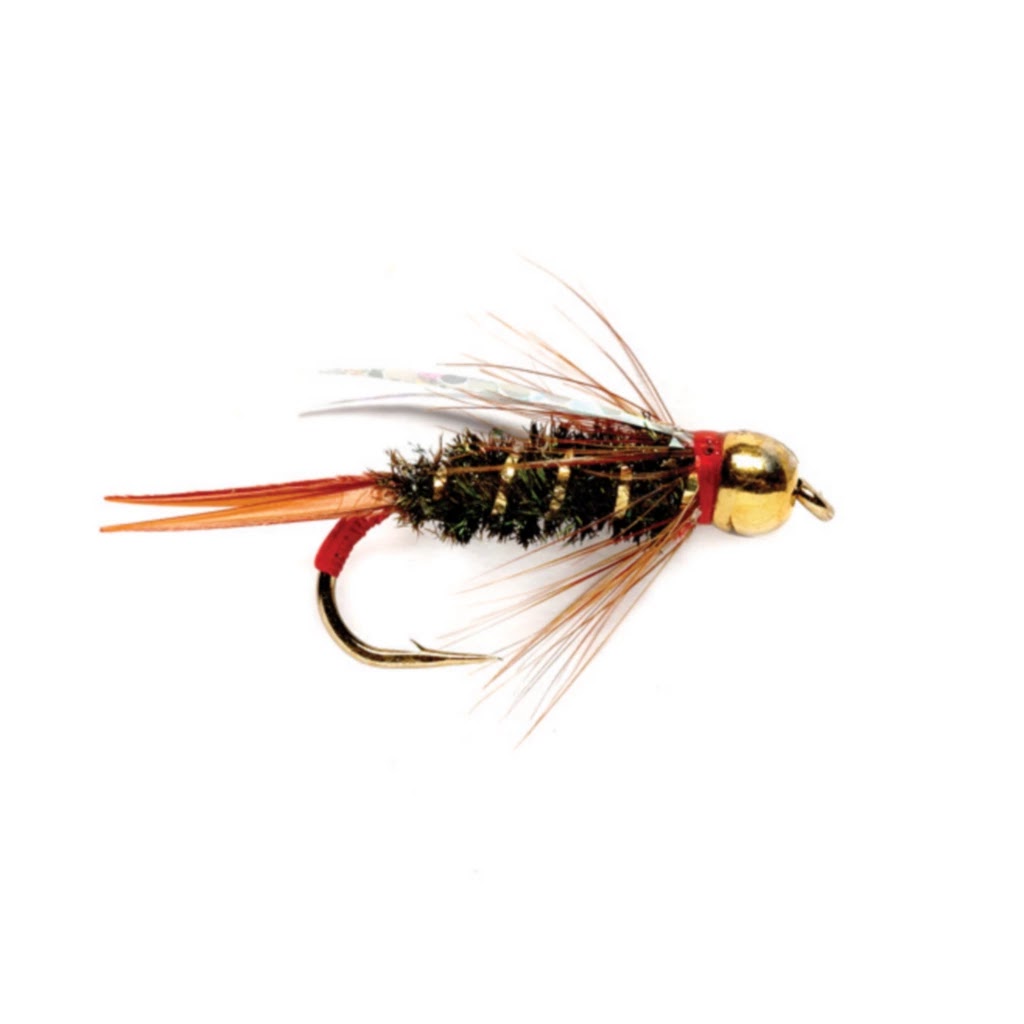Please forgive me for the boisterous title of this blog. I understand there are literally thousands of patterns to choose from, varying in effectiveness depending on location, weather patterns, time of year, etc. The flies I am going to list below are my personal "must haves". These are my bread and butter flies, and they have served me particularly well in the trout streams of the West. Although mainly trout flies, I have also had success using these patterns on a variety of freshwater species including smallmouth bass, perch, sunfish, and whitefish (don't hate - it's a native fish!). The patterns I have chosen are a murder's row of simplicity, matched with an undeniable power to catch the attention of even the most stubborn fish. If you don't have them in your fly box already, I would implore you to add them to your repertoire for your next outing. Tried and true patterns, I hope you will find these flies as useful as I have.
Dry Fly: Purple Haze
"I am become death, destroyer of worlds." -J. R. Oppenheimer -Andy Carlson (probably), founder of the original Purple Haze.
The Purple Haze mayfly imitation was created over 15 years ago as a spin-off of the typically gray-bodied Parachute Adams fly. Carlson's reimagining of this classic dry fly pattern to include an attractive purple body was likely considered ludicrous by uptight traditionalists, but it would quickly yield undeniable results when applied to trout water. Applied in the appropriate size, this fly's ability to match a variety of mayfly hatches is incredible. Whether it be BWOs, PMDs, or Green Drakes, the Purple Haze can make for a fantastic option as a searching pattern or a last-ditch effort fly. I am not pressed to say it can even be used as a small ant imitation in the dog days of the terrestrial season. I've personally seen this pattern work wonders in nearly any situation imaginable, and when the bite is on for Purple Haze, sometimes that is all the fish will even eat.
Why fish are so attracted to such a clearly unnatural shade of purple? Beats me. But this pattern has proven itself as an absolute killer. I would especially recommend this pattern for use in alpine lakes. Making the long trek to a mountain lake, these fish typically see far less angling activity than fish in highly trafficked rivers. Already struggling to find adequate nourishment in the challenging environment of the high country, this amplifies their eagerness to bomb intriguing artificial flies on the surface. Dropping a Purple Haze in their line of sight in an alpine lake is almost unfair; they've never seen anything this delicious looking in their lives! Give it a try yourself, and I bet you will be blown away by the results.
Another pattern known for its versatility in imitation, the Prince Nymph can present as a mix of mayfly or stonefly nymphs. With a bead head and dark body, its white wings and red collar add just enough flash to grab the attention of hungry feeders below the surface. Sometimes the flash even works as an irritant to entice an aggressive brown to take an investigative strike. In smaller sizes, this nymph works as a fantastic dropper that can trail larger nymphs, or fall faithfully below a foamy dry fly. This wet fly can be applied in all seasons, making it a truly timeless fly.
Oftentimes, you can buy these flies for cheap by the dozen in a pre-packaged box in a variety of sizes at your local fly shop. Be ready to lose these nymphs quickly when you fish them at the bottom of the water column, so it doesn't hurt to load up when you get the chance. The Prince Nymph is a popular pattern with many color and sparkle variations, so do not be afraid to experiment. I find myself using these heavily in shoulder seasons to catch the early and late emergences/hatches, and also as a winter standard to accompany squirmy wormies or rubber leg patterns. Drop it deep, and let the Prince Nymph work its magic!
The ol' reliable. The ugly bug. The last stand. Meat. When all else fails, it's time to get conventional. That is what the Woolly Bugger represents.
When most people begin fly fishing, they are reluctant to use streamers because this angling tactic reflects exactly the kind of fishing they are looking to take a break from. So why use this strategy when fly fishing? News Flash: Streamers work. And they often catch very large fish. When fish attain a certain body mass, they begin to shift their focus away from insects and spend more time chasing wounded baitfish/larger meals instead. Fly fishing with Woolly Buggers may not have the same allure and beauty as fly fishing with intricate dry flies, but they present a very exciting meal opportunity to angry trout and can head fantastic results.
This pattern is best suited for situations with limited hatches, aggressive species (smallmouth, brown trout, pike), or an abundance of baitfish. Tactics range from stripping Woolly Buggers at triggering paces, dead drifting them with a bobber, and swinging them across currents. These flies are an excellent choice for nearly all rivers and lakes alike. Modern streamer selection can get complicated, but as you will hear from a multitude of experienced anglers and shops; the bugger, usually in smaller sizes, is still the most effective and reliable streamer pattern on the market. Make sure to have a dark Woolly Bugger for gloomy days, and a lighter one for brighter days. Don't overthink the bugger. It is a great tool to be employed in almost any circumstance.








No comments:
Post a Comment